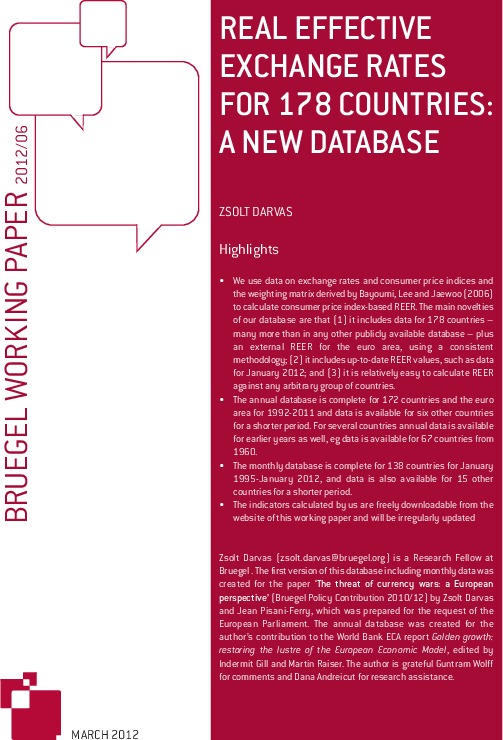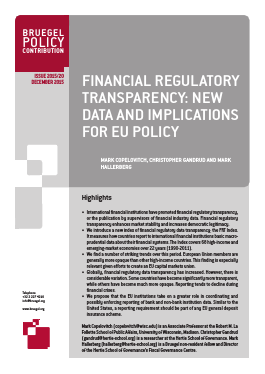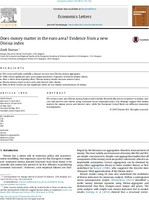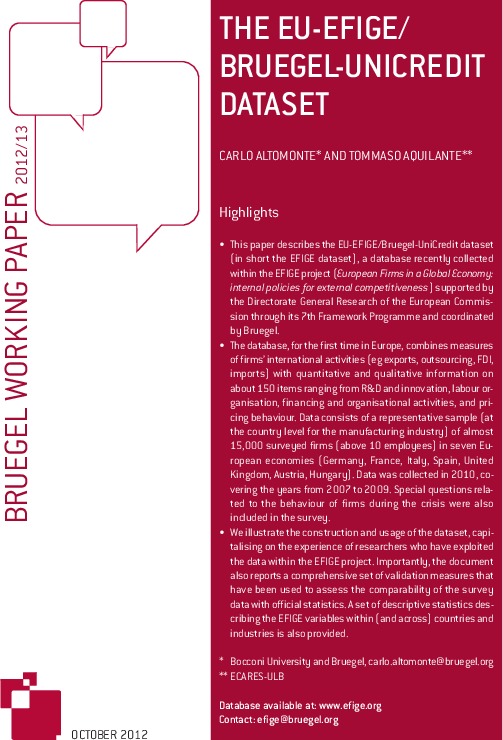Working Paper
Real effective exchange rates for 178 countries: a new database
Using data on exchange rates and consumer price indices and a weighting matrix, we calculate up-to-date consumer price index-based REER (the real effective exchange rate) for 178 countries – many more than in any other publicly available database – plus for the euro area. The database will be irregularly updated.
Click here for the most recently updated database
The real effective exchange rate (REER), which measures the development of the real value of a country’s currency against the basket of the trading partners of the country, is a frequently used variable in both theoretical and applied economic research and policy analysis. It is used for a wide variety of purposes, such as assessing the equilibrium value of a currency, the change in price or cost competitiveness, the drivers of trade flows, or incentives for reallocation production between the tradable and the non-tradable sectors.
Due to the importance of the REER in economic research and policy analysis, several institutions, such as the World Bank, the Eurostat, the BIS, the OECD, just to name a few, publish various REER indicators which are freely downloadable. Altogether, these institutions publish data for 113 countries. The countries for which data are available include all advanced and several emerging and developing countries. However, different databases may have different methodologies and even the 109 countries included in the World Bank database miss several dozen countries of the world.
Our database has three novelties:
- Using a consistent methodology, we calculate CPI-based REER for 178 countries (plus the euro area) for annual data and for 153 countries (plus the euro area) for monthly data.
- We calculate the REER for all countries up to date, eg in the current vintage of the database we calculate up to January 2012.
- It is relatively easy to calculate REER against any arbitrary group of countries – what is needed for this is a re-scaling of the weighting matrix.
The database will be irregularly updated.












